6 kinds of indoor flowering plants that tolerate partial shade and can grow and bloom normally on the windowsill
In the cold winter, if the indoor temperature is suitable, you can also try to grow some semi-shade-tolerant flowering plants. Growing them in potted or hanging pots on the windowsill is also a good choice. Common Christmas cactus, cyclamen, Kalanchoe, Phalaenopsis, Dendrobium or Clivia are all good choices.
1. Potted flowers grown on windowsills with insufficient sunlight:
1. Hoya
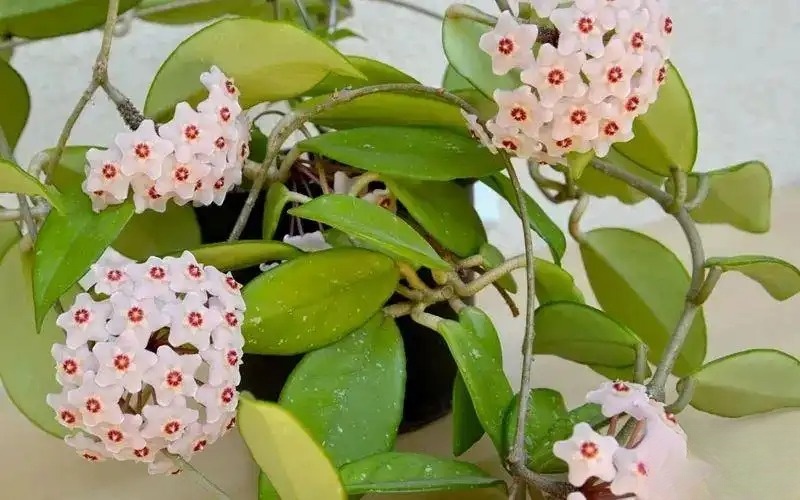
Many friends have Hoya at home. It is a climbing succulent plant that can be grown as a hanging pot flower on the windowsill. Unlike other succulents, it does not require much light and can grow and bloom with about three hours of light a day.
If it is kept in a place with insufficient light, it will become a foliage plant. If the light is too strong, the leaves will be sunburned and even the plant will wither.

The soil does not need to be kept moist frequently when cultivating Hoya. It does not require much water, but it likes extremely high humidity. Maintaining the humidity of the cultivation environment between 55% and 75% is conducive to promoting flowering. In addition, the environment where Hoya is planted should pay attention to enhancing ventilation, and the leaves should not be frequently moistened, otherwise they are prone to fungal diseases. Pay attention to maintaining a warm environment, and keep the minimum maintenance temperature above 4 degrees.
2. Happy Flowers
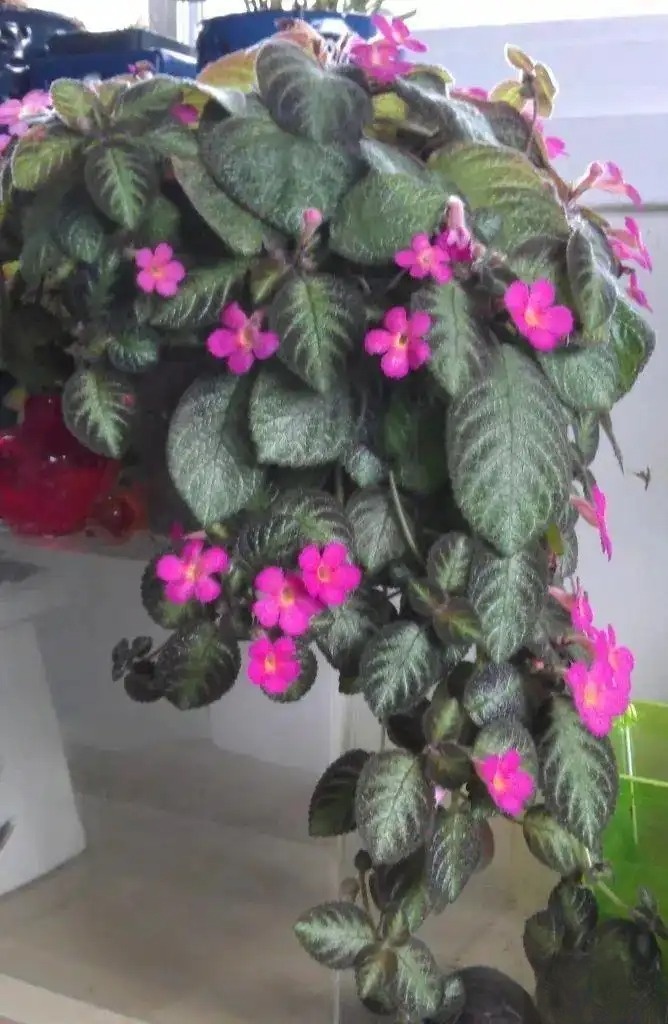
The shade-loving flower is a relatively niche indoor foliage and flower ornamental plant. It can be grown in a hanging pot on the windowsill. It prefers bright scattered light and is afraid of direct light. Too strong light will cause the leaves to wither. It is usually grown in an east-facing position and given about two to three hours of soft light every day.
When caring for shade-loving potted plants, you must also pay attention to keeping the environment warm. The best maintenance temperature is between 20 and 33 degrees, and the minimum maintenance temperature needs to be maintained above 10 degrees, otherwise it is easy to get frostbite.
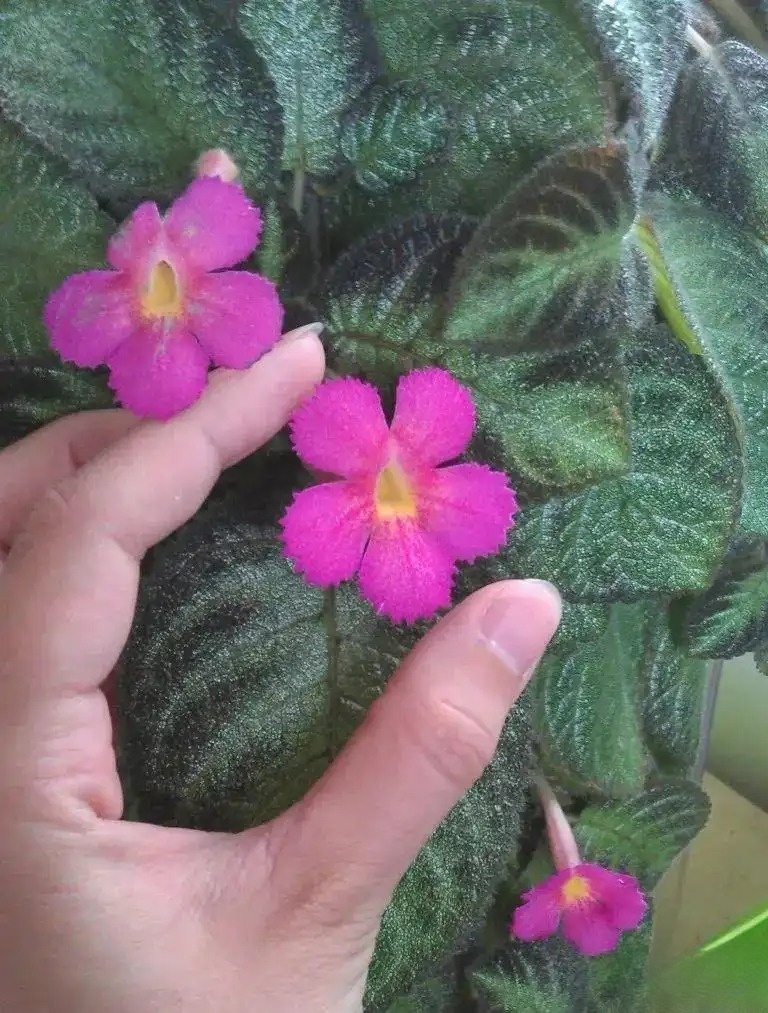
When planting shade-loving flowers, pay attention to providing some loose, fertile and well-drained slightly acidic soil. The planting location should be ventilated and light-permeable, and maintain an air humidity of more than 55%. Avoid the leaves when watering. Keep the pot soil slightly moist in spring and summer, and occasionally add thin fertilizer to promote the formation of flowers.
3. Begonia
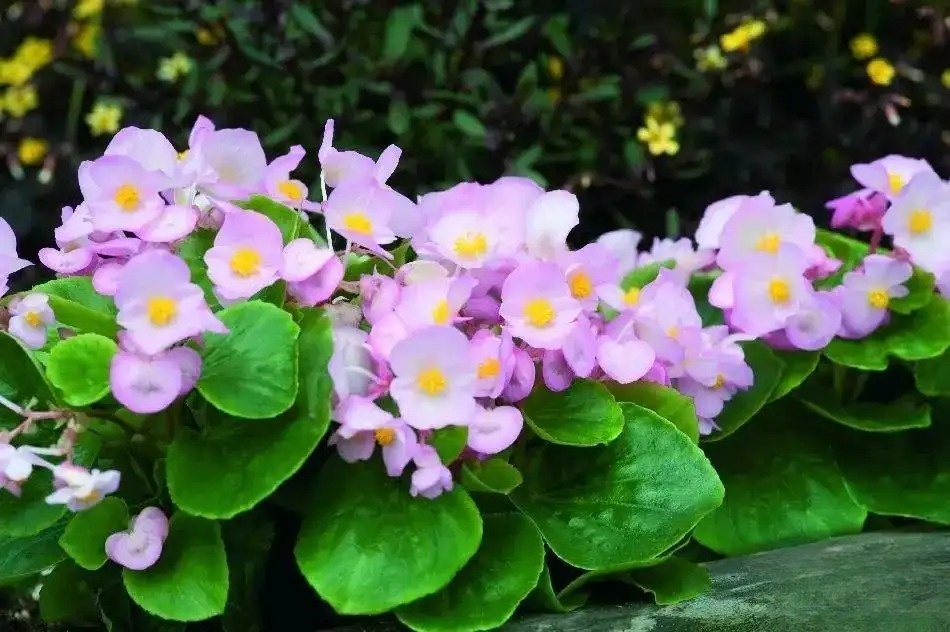
Begonia is one of my favorite herbaceous flowering plants. Its plant is small and suitable for potted plants. Whether it is grown on a table or on a windowsill, you must ensure that the environment is ventilated, give it sufficient light in the morning or evening, and avoid growing it in excessive shade.
In spring and summer, it is generally necessary to add a thin layer of fertilizer once every week. When fertilizing indoors, the concentration should be reduced by more than half. Also, be careful to avoid water droplets remaining on the leaves.
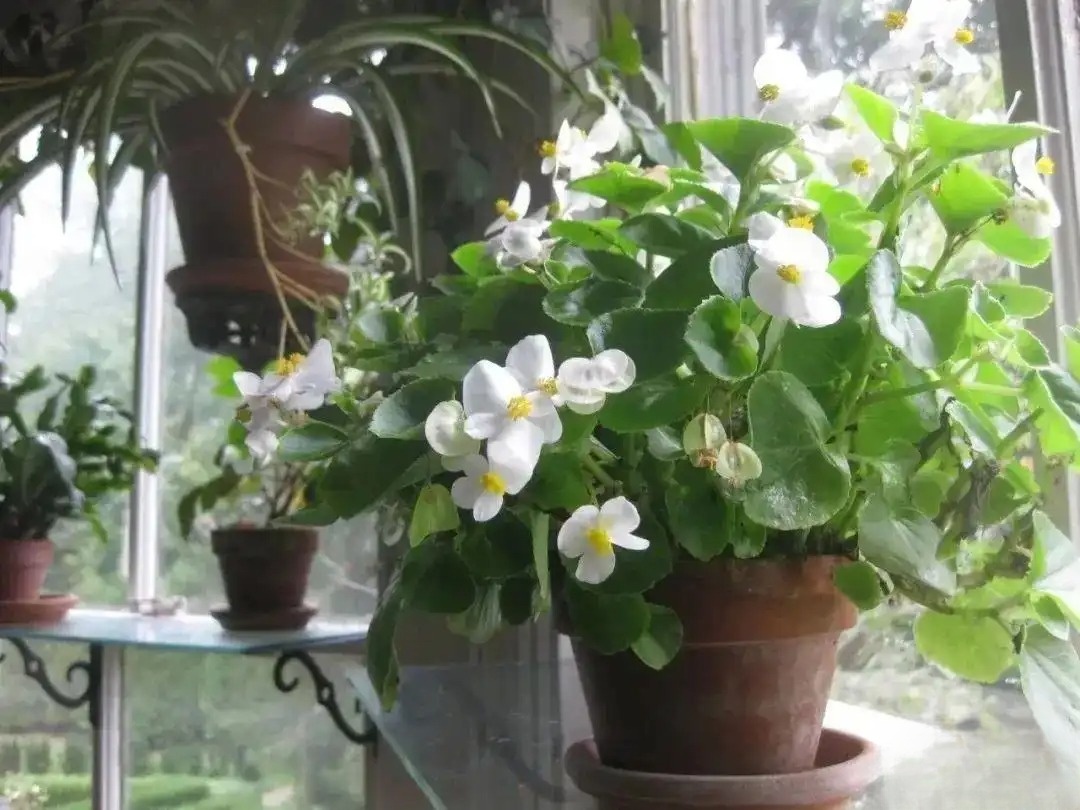
Begonias are afraid of cold weather, so they should be kept above 7 degrees Celsius to avoid freezing in winter. In addition, they should be planted in loose and well-drained soil. After the flowers wither, the remaining flowers should be cut off in time, and fertilizer and water should be added in time after the flowers bloom.
4. Lipstick Flower
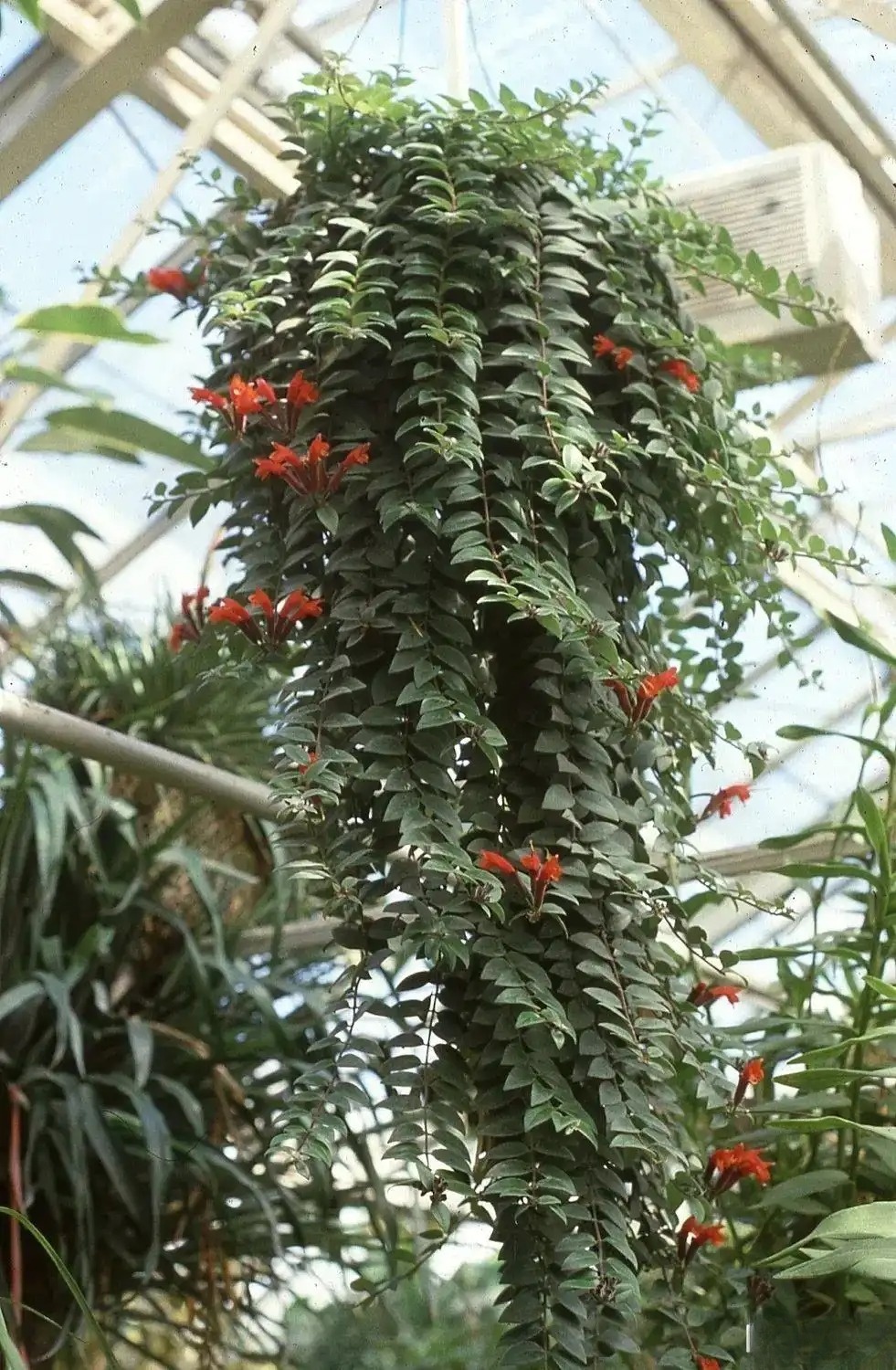
Lipstick flower (Lipstick Chlorophytum) is a relatively shade-tolerant hanging pot flower. It is afraid of direct sunlight and can usually be grown on an east-facing windowsill. When growing it on an indoor windowsill, pay attention to maintaining high humidity, ensuring the environment is ventilated, and maintaining the maintenance temperature above 10 degrees.
Lipstick flowers do not require overly frequent watering. If the weather is good, the soil in the pot can be kept slightly moist in spring and summer. When the temperature drops in autumn and winter, the moisture should be controlled and the soil should not be too moist.
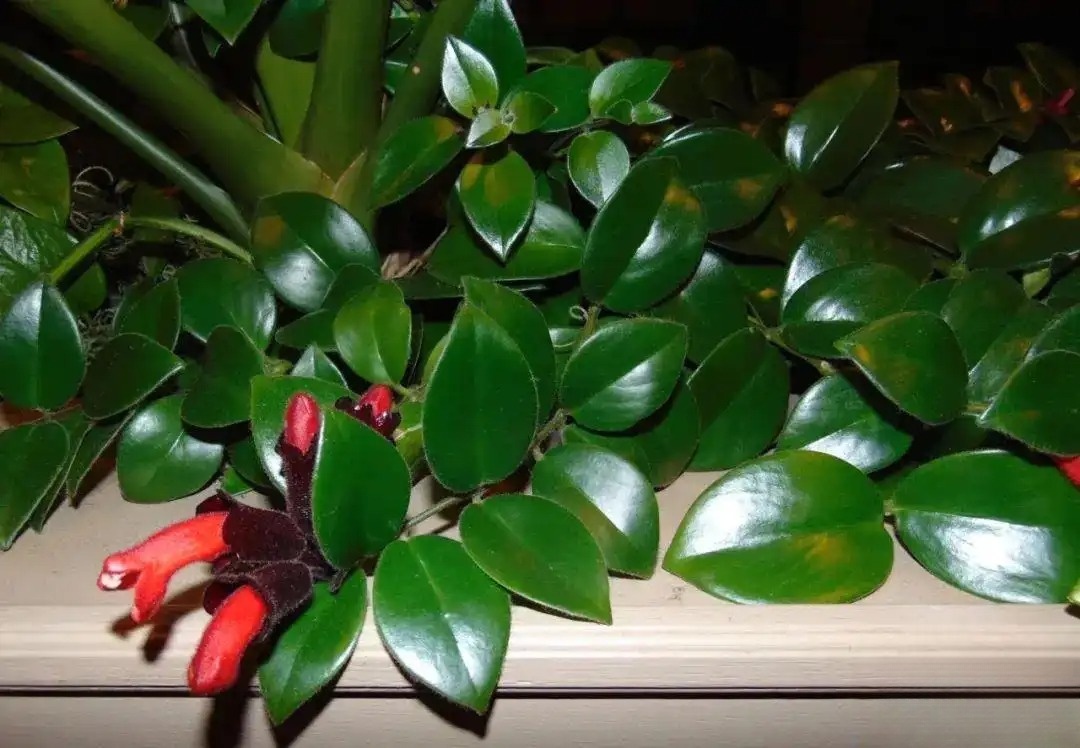
If you want the lipstick flower to bloom all year round, you must pay attention to maintaining the humidity (55%~70%), provide appropriate scattered light every day, and occasionally add fertilizer and water, and add liquid fertilizer every two or three weeks.
5. Oil painting wedding dress Tradescantia
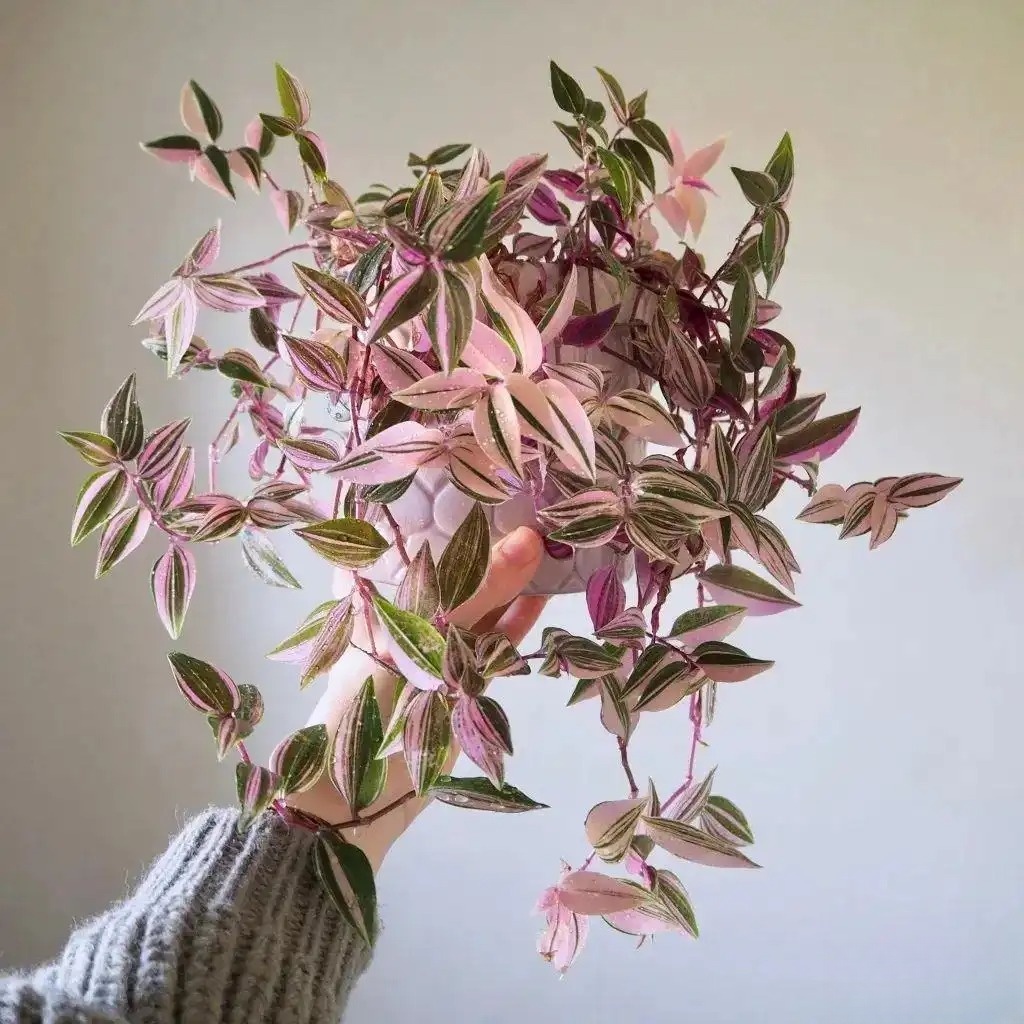
This is a relatively niche ornamental flower. The Oil Painting Wedding Dress Tradescantia is bred by hybridizing different Tradescantia varieties. It has charming patterns on its leaves, which look like oil paintings, with pink, green and white patterns on the leaves.
If the potted oil painting wedding dress is well maintained, it can also bloom delicate little flowers. Its flower color is very romantic. The back of the flower bud is purple, while the petals are white. With some yellow stamens, it looks extremely charming.
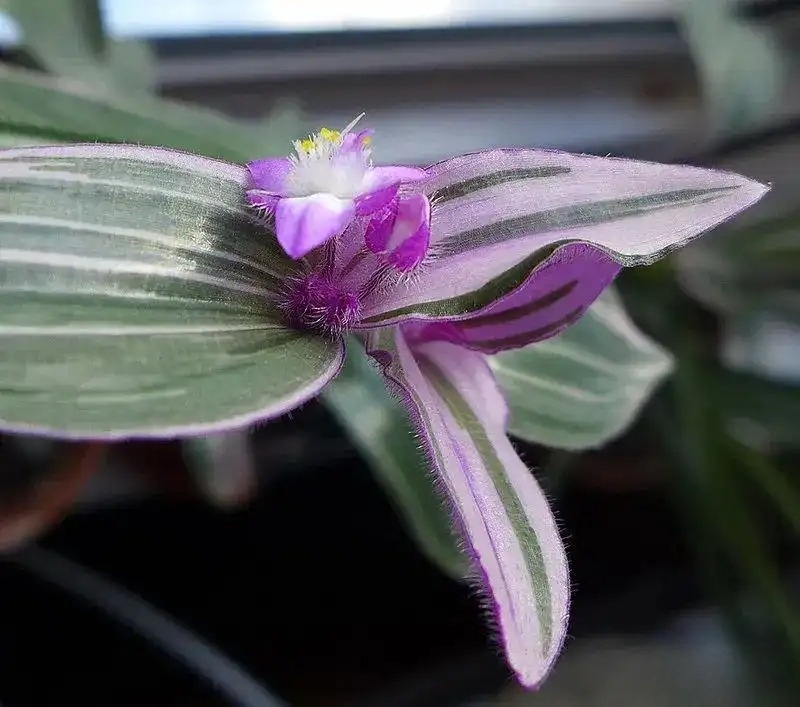
To maintain the oil painting wedding dress, you need proper light, high air humidity, and relative humidity above 50%. In addition, you need to pay attention to frequent application of thin fertilizers, and occasionally add some phosphorus and potassium fertilizers to avoid color fading. You also need to pay attention to ensuring that the environment is ventilated and the maintenance temperature is maintained above 7 degrees.
6. Silk Reed Cactus
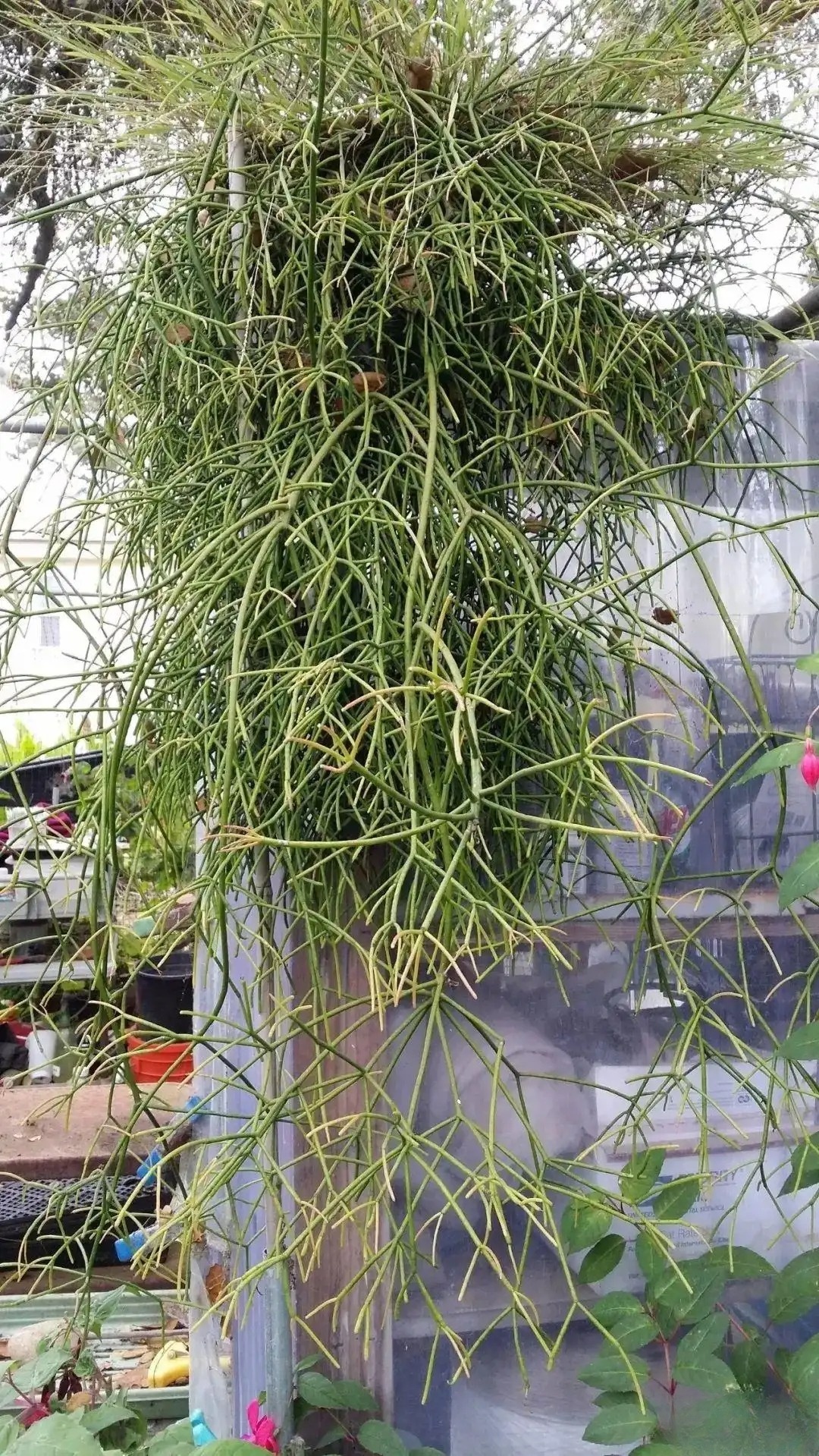
The Silk Reed Cactus is a very unique epiphytic plant. It originally grows in tropical rainforests. Caring for this plant is similar to caring for Christmas cactus. They prefer scattered light and are afraid of strong light.
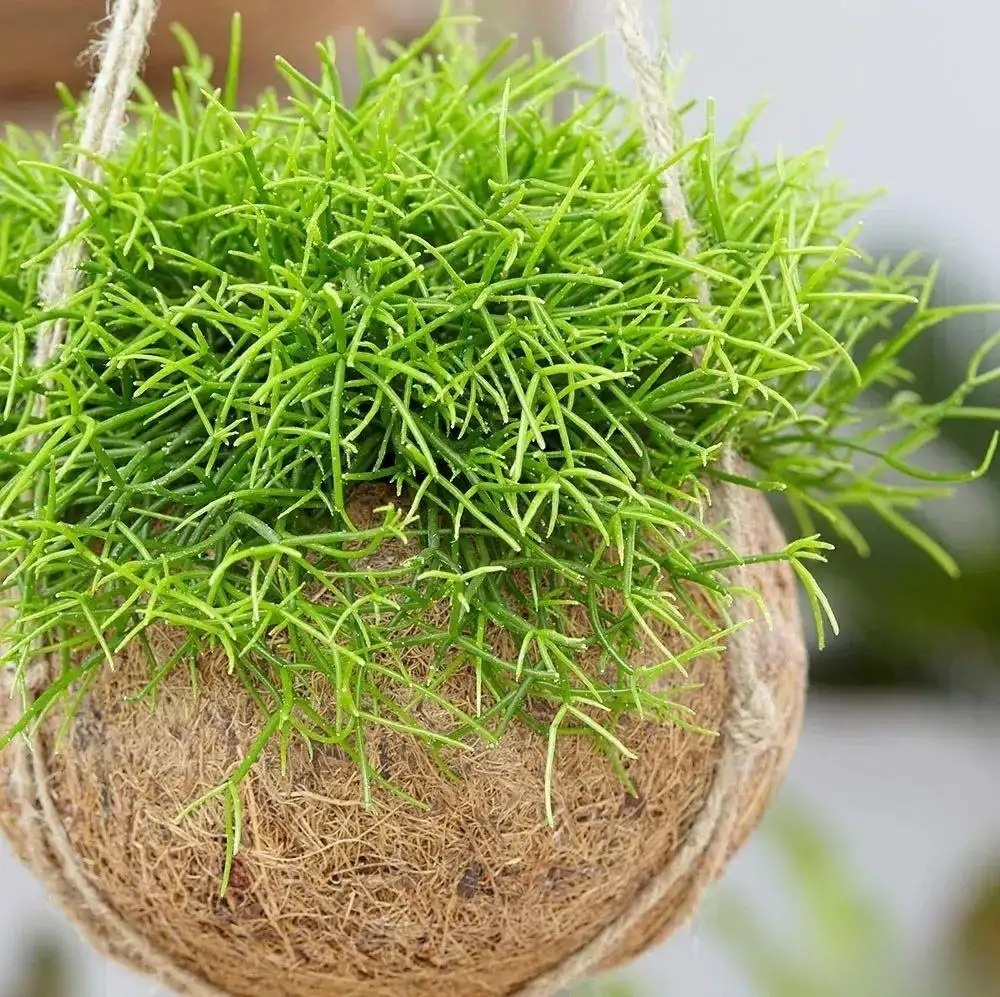
The biggest problem with maintaining a silk reed cactus potted plant indoors is that it requires a high air humidity, which is very different from other cactus plants, and the indoor air is quite dry. The soil does not need to be watered too frequently, because the root system of the silk reed cactus is relatively fragile. The soil for planting should have good air permeability and drainage. Generally, some bark, decomposed sawdust, peat soil and perlite need to be added to the soil.
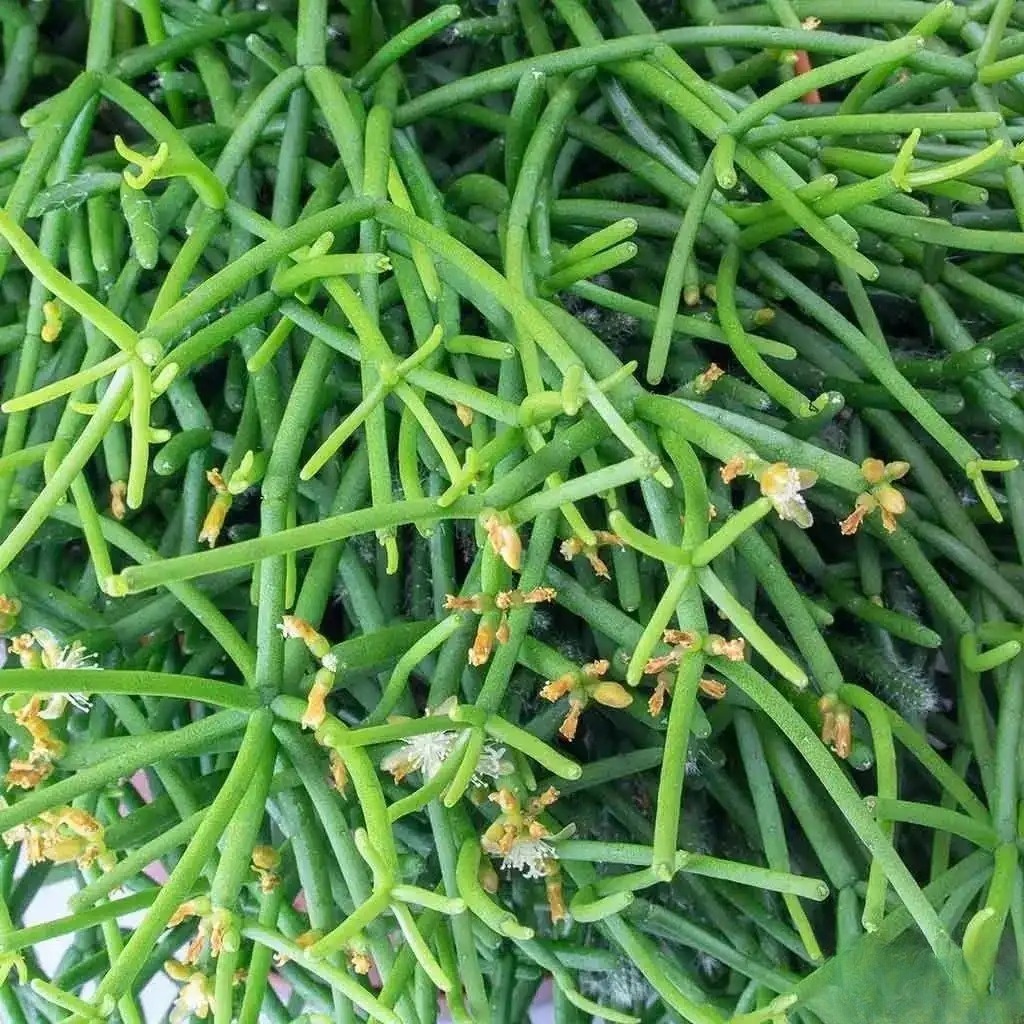
The environment for maintaining the silk reed cactus should have more than three hours of scattered light every day. Pay attention to maintaining an air humidity of more than 55%, and keep the temperature between 15 and 28 degrees. In the summer, you can add a thin layer of fertilizer every one or two months. As long as they are properly maintained, these silk reed cacti can also bloom small white flowers.